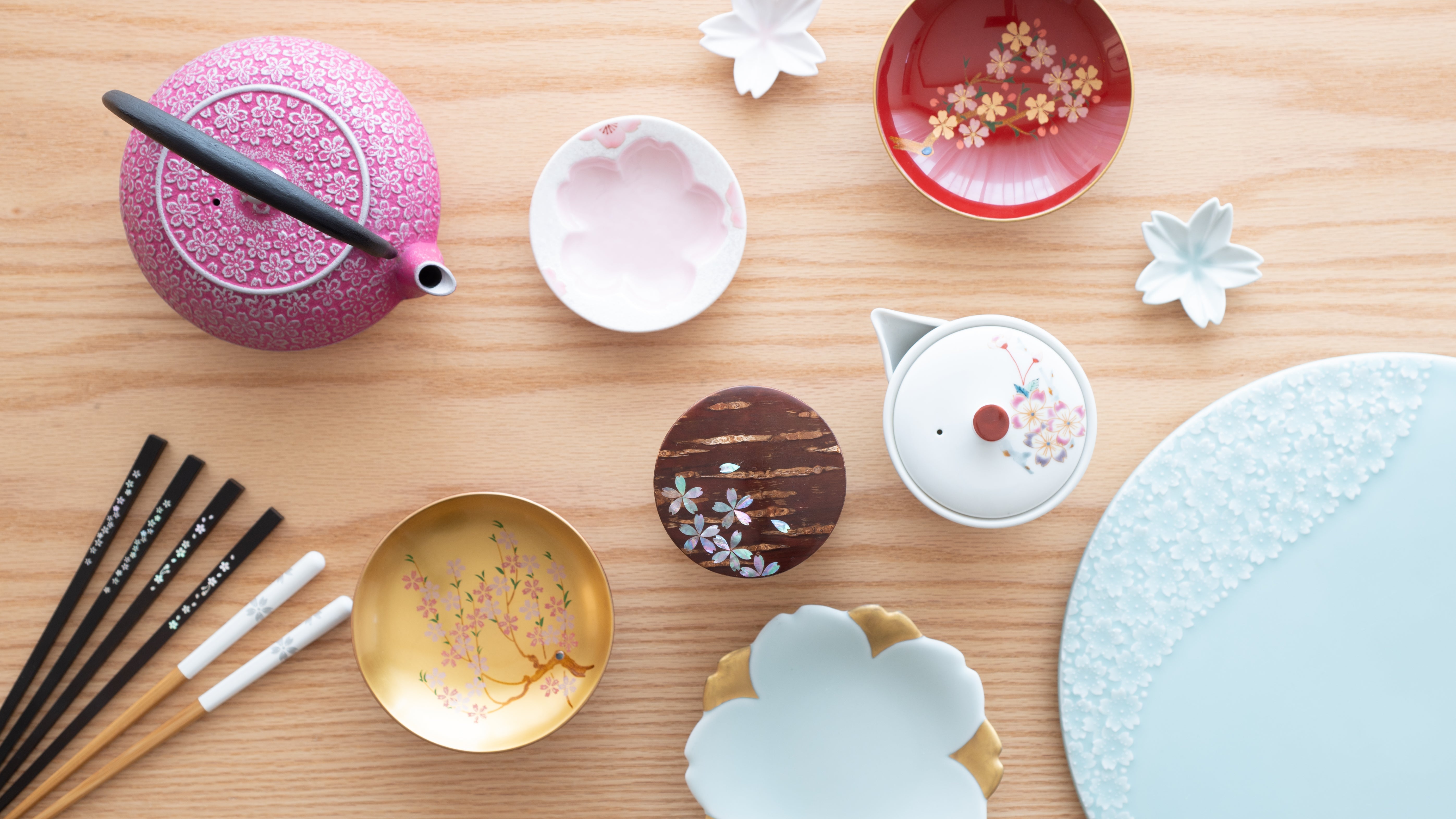
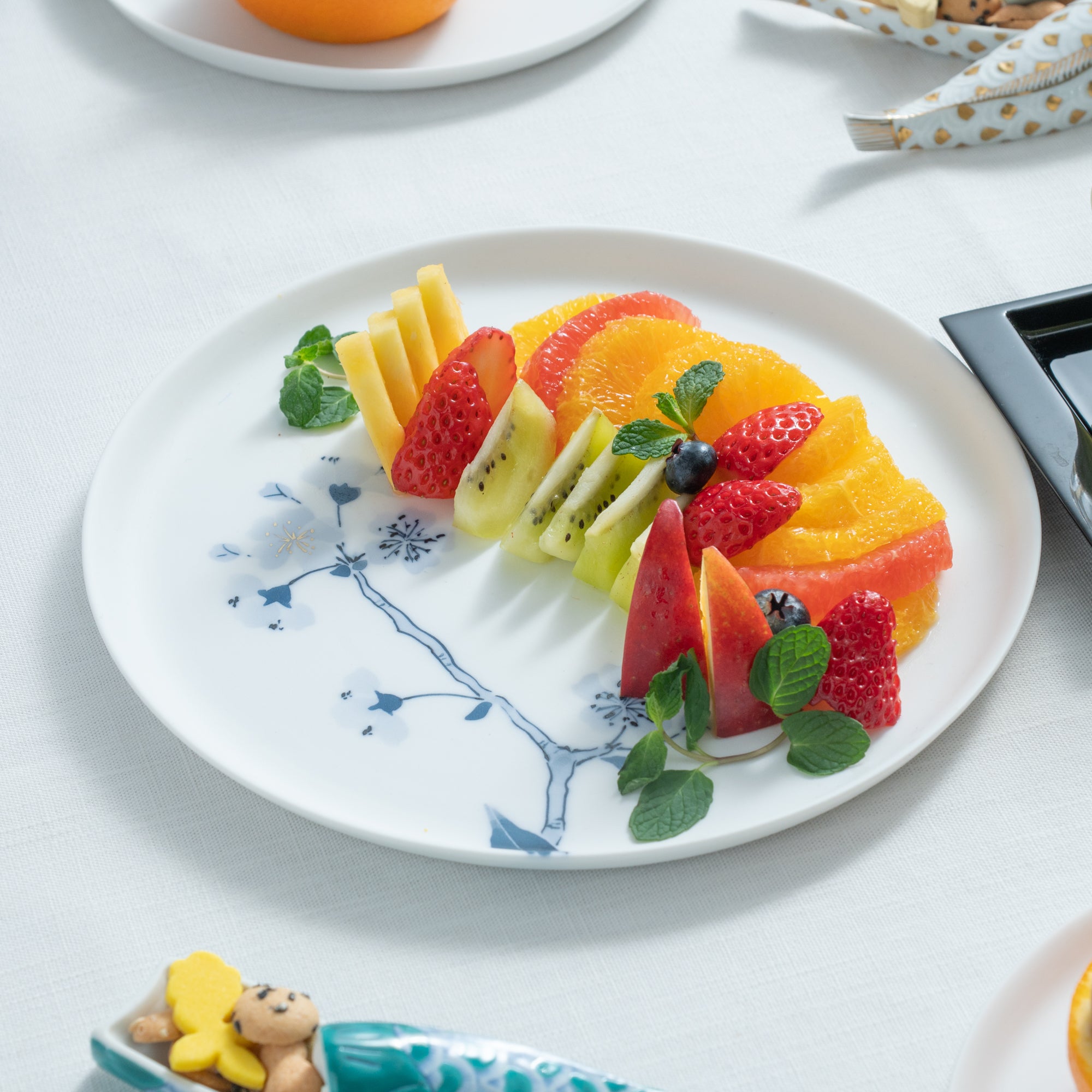

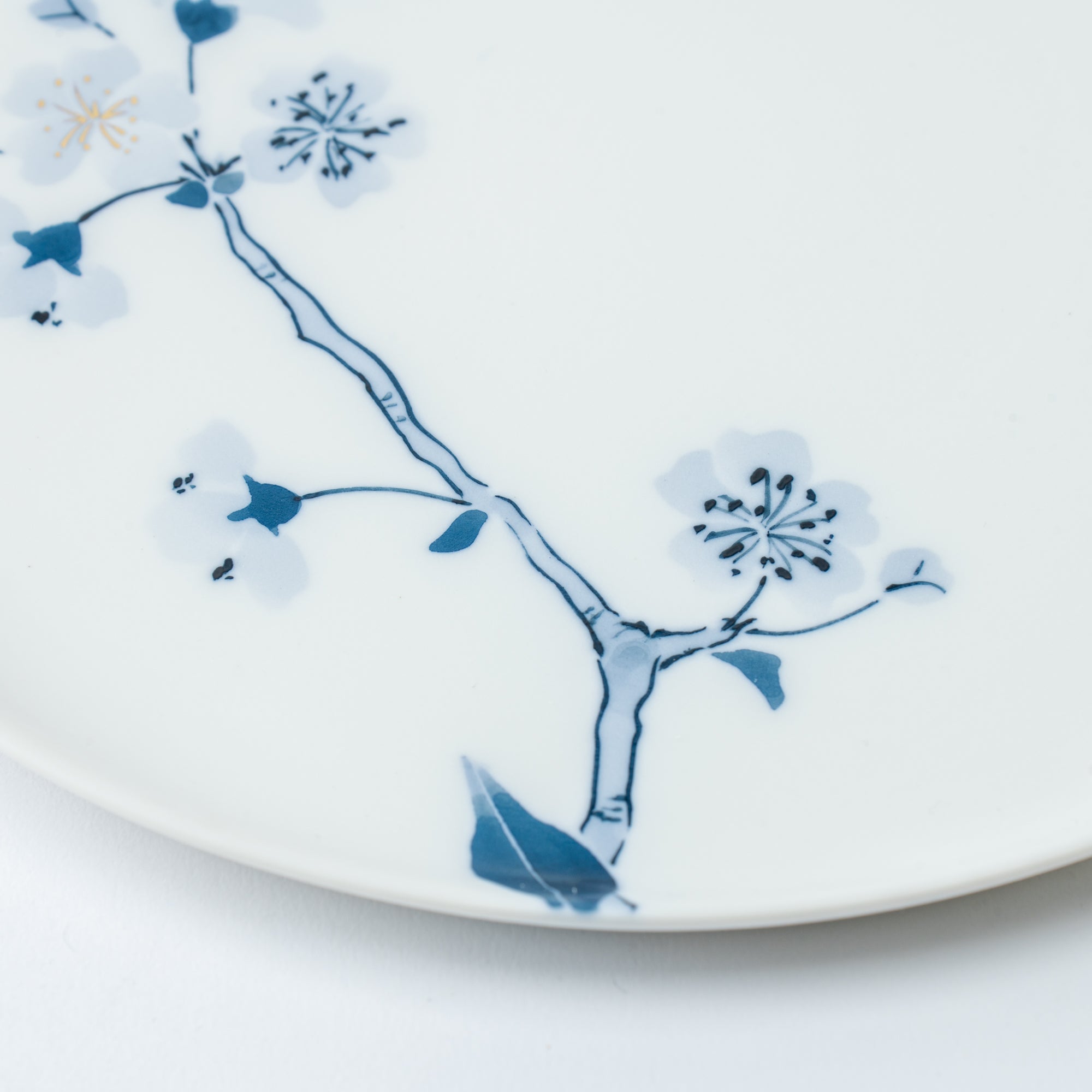



Blau Blumen-Sakura-Essteller
Estimated Shipping Widget will be displayed here!
Bringen Sie die ruhige Anmut der Sakura auf Ihren Tisch mit diesem blau-weißen Porzellanteller, verziert mit Seto Sometsuke– der ikonische blau-weiße Stil. Ein einzelner Zweig erstreckt sich über die Oberfläche, blüht mit weichen Blütenblättern in blassen Farbtönen und wird von einem sanft konturierten Stamm verankert, ein originelles Design für Musubi Kiln.
Das Blumenmuster ist mit einem dicken Pinsel handgemalt. gosu, ein Kobaltpigment. Diese traditionelle Technik ermöglicht subtile Farbvariationen – von tiefem Indigo bis zu blassem Blau – und fängt die sanfte Schichtung jedes Blütenblatts und Blattes ein. Zarte Blätter strecken sich nach außen und verleihen der floralen Komposition Bewegung, die durch die ruhige Hand und das raffinierte Können eines erfahrenen Kunsthandwerkers zum Leben erweckt wird.
Mit seiner sanft mattierten Oberfläche und dem niedrigen Rand bietet dieser Essteller einen sauberen Rand, der dabei hilft, das Essen zu zentrieren und jedem Gericht ein stimmiges Aussehen zu verleihen – egal, ob Sie ein Hauptgericht oder ein farbenfrohes Dessert zum Abschluss einer besonderen Mahlzeit servieren.
Wunderschön verpackt in einer passenden Schachtel mit demselben Sakura-Motiv ist es auch ein einfaches, wohlüberlegtes Geschenk.
EINZELHEITEN
| Quantity |
1 |
| Size | D 23.0 cm (9.1 in) x H 1.5 cm (0.6 in) |
| Weight | 362 g (12.8 oz) |
| Material | Porcelain |
| Package Type | Paper box |
| Microwave | No |
| Dishwasher | No |
Hersteller / Marke
SINGAMA wurde 1919 gegründet und ist ein familiengeführtes Töpferstudio in Shinano, einer kleinen Stadt in den nordöstlichen Hügeln der Stadt Seto in der Präfektur Aichi. Das Studio verwendet hochwertigen lokalen Ton und ist spezialisiert auf Seto Sometsuke– weißes Porzellan mit sanften, indigoblauen Mustern. Jedes Stück ist handbemalt und strahlt mit seinen sanften Formen und der Wärme, die es auf dem alltäglichen Tisch ausstrahlt, Behaglichkeit aus.
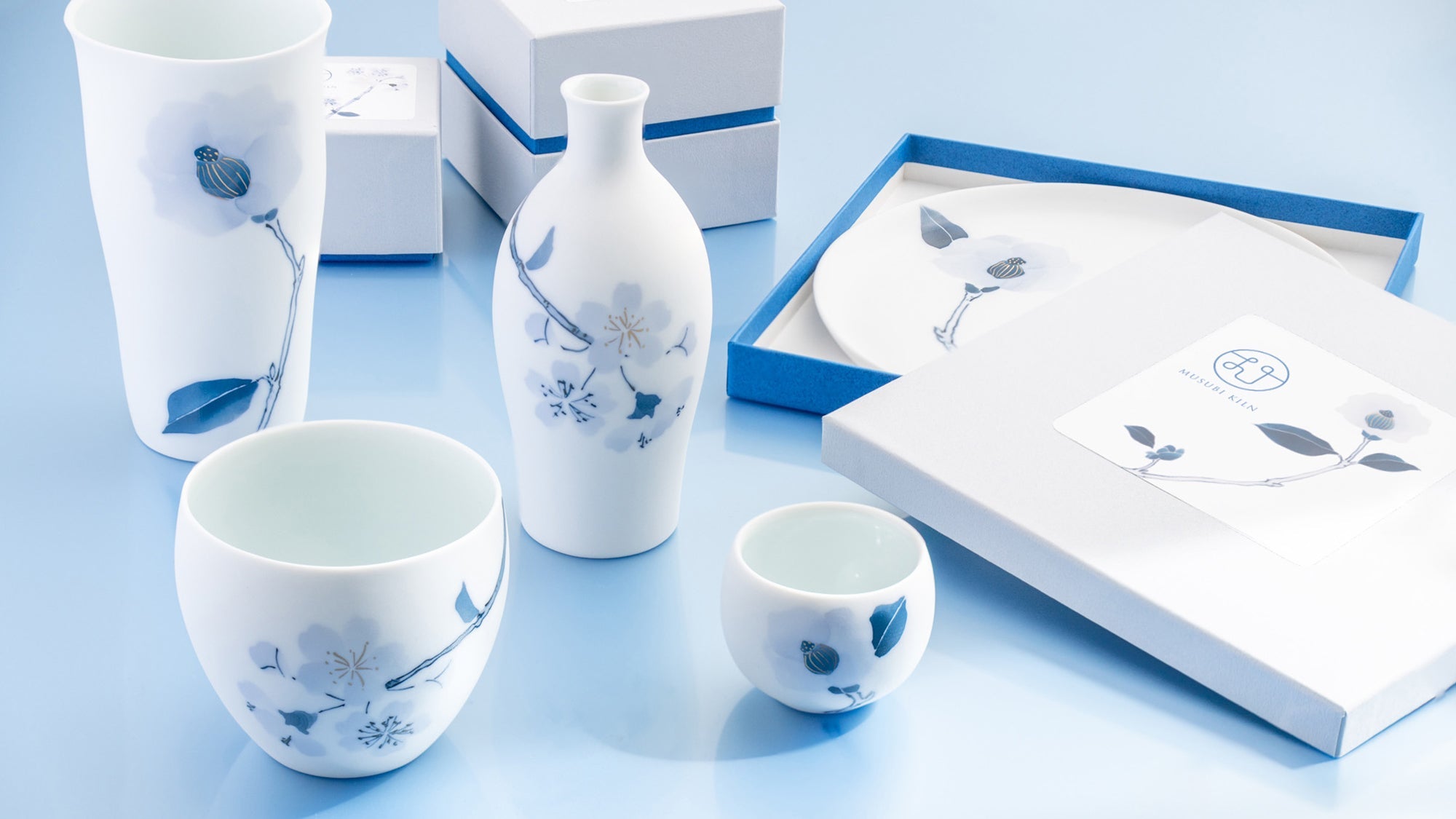
Kunsthandwerk
Seto-Ware wird in und um Seto City in der Präfektur Aichi hergestellt und umfasst eine breite Palette an Keramiken, die Jahrhunderte der Handwerkskunst und Innovation widerspiegeln. Als einer der sechs alten Brennöfen (Rokkoyo) Japans nimmt die Region Seto einen herausragenden Platz im keramischen Erbe des Landes ein. Sie war auch ein Pionier in der Massenproduktion von Porzellan, und ihre weite Verbreitung führte zum Wort setomono– ein Begriff, der auch heute noch allgemein für Keramik verwendet wird.
Seto ist eine der wenigen Regionen Japans, in der sowohl Steingut als auch Porzellan hergestellt werden und zeichnet sich durch eine bemerkenswerte stilistische Vielfalt aus. Von einfachem Alltagsgeschirr bis hin zu edleren Stücken prägt Seto-Keramik den Alltag mit Kreationen, die Tradition und Kreativität in Einklang bringen.
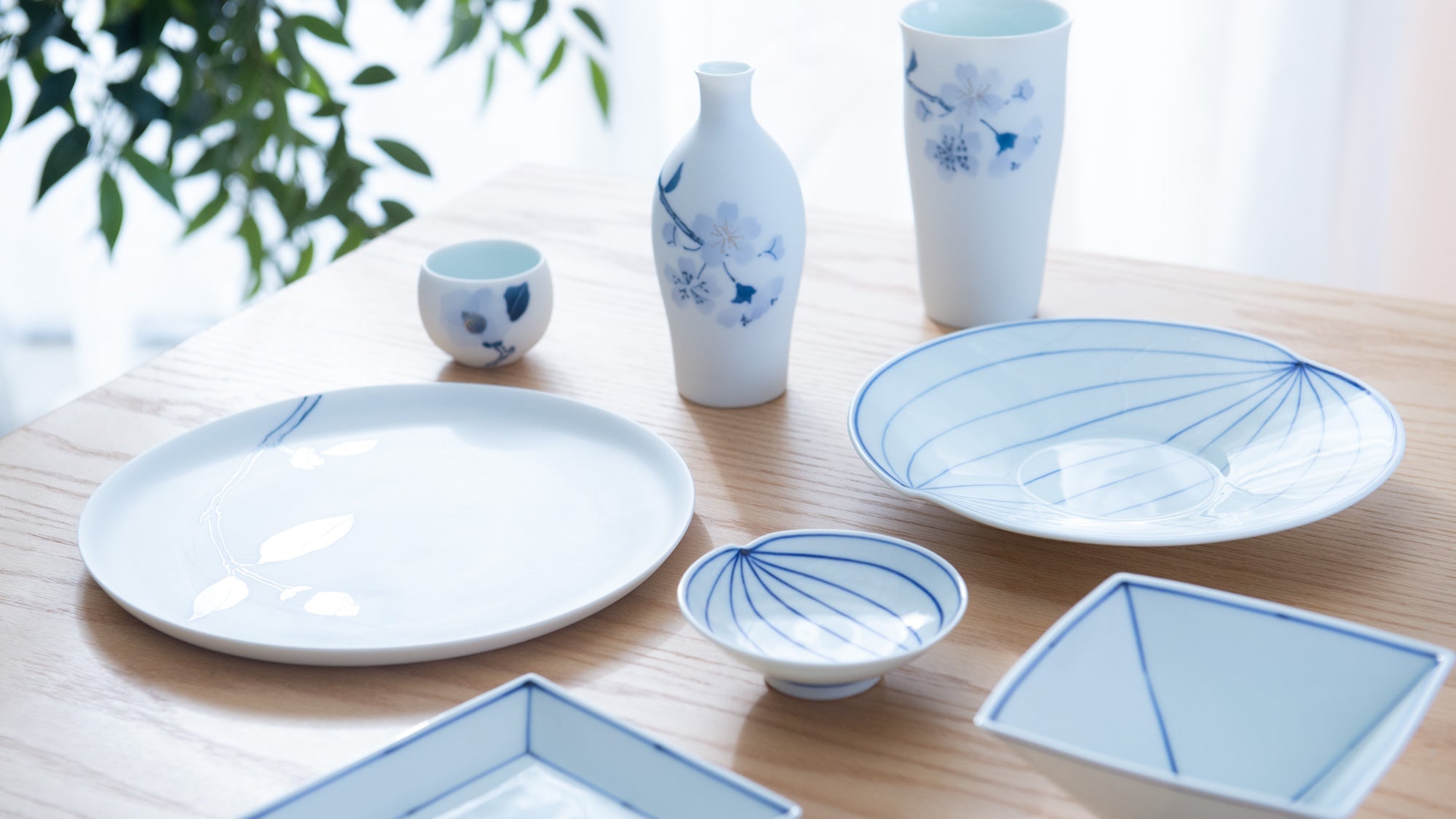
Anmerkungen
Optionen auswählen







Teller
Diese Kategorie umfasst Teller mit einem Durchmesser von 21 cm (8,3 Zoll) bis 30,9 cm (12,2 Zoll). Für traditionelle japanische Gerichte sind Teller mit einem Durchmesser von etwa 8 Zoll am praktischsten. Für ein Tellergericht oder Pasta hingegen sind Teller mit einem Durchmesser von etwa 25 cm (10 Zoll) praktischer.
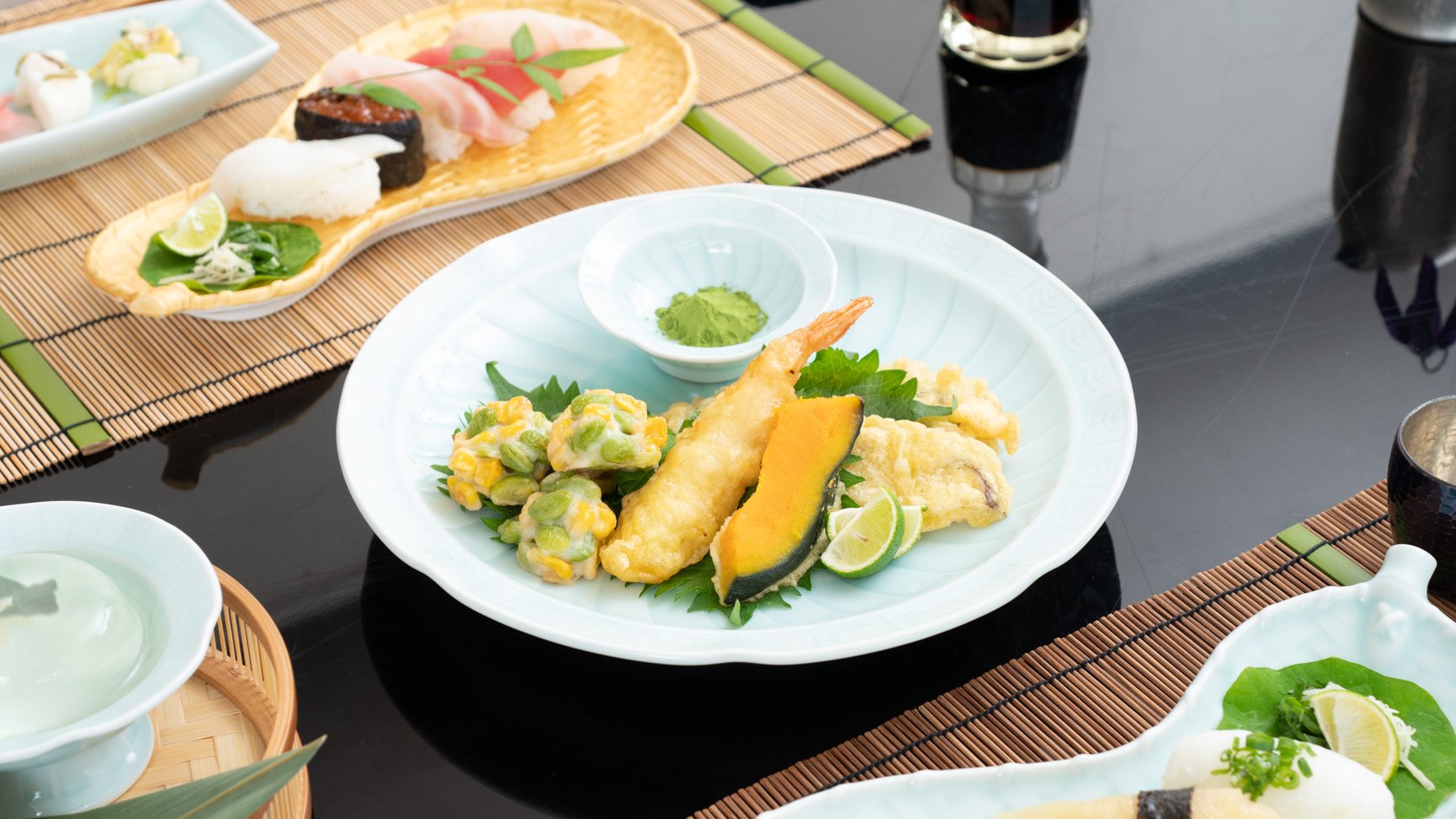
Sakura
Aus unserer Kollektion an japanischem Geschirr und Essgeschirr haben wir Artikel mit Kirschblütenmotiven zusammengestellt, die die Schönheit Japans widerspiegeln. Wir hoffen, dass Sie diese Stücke, die bei Menschen jeden Alters und aus allen Regionen beliebt sind, in Ihrem Zuhause willkommen heißen.
